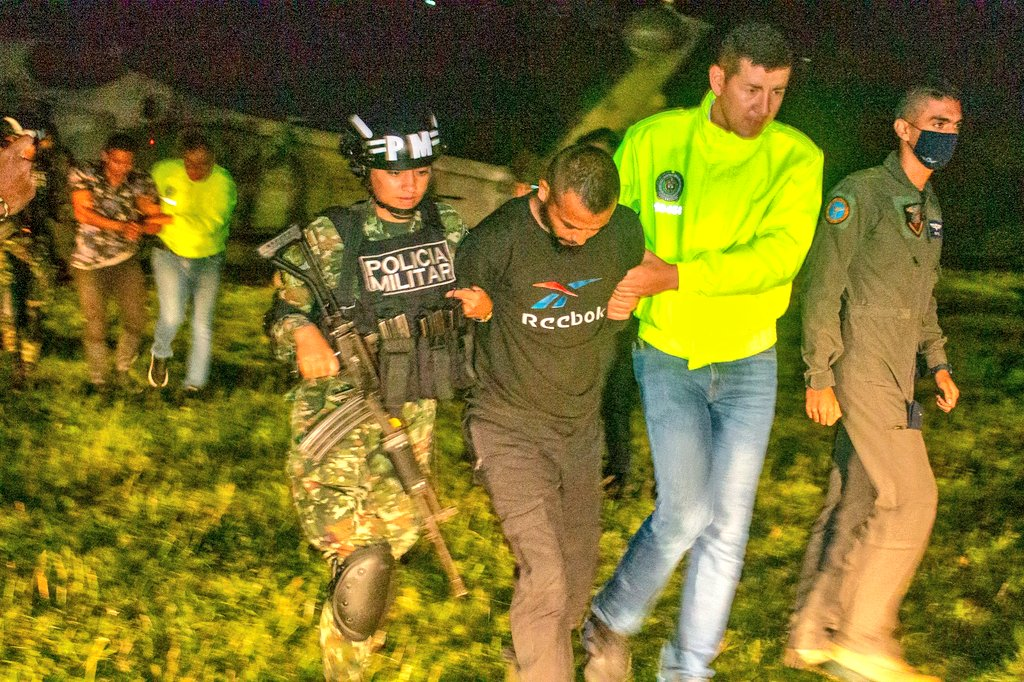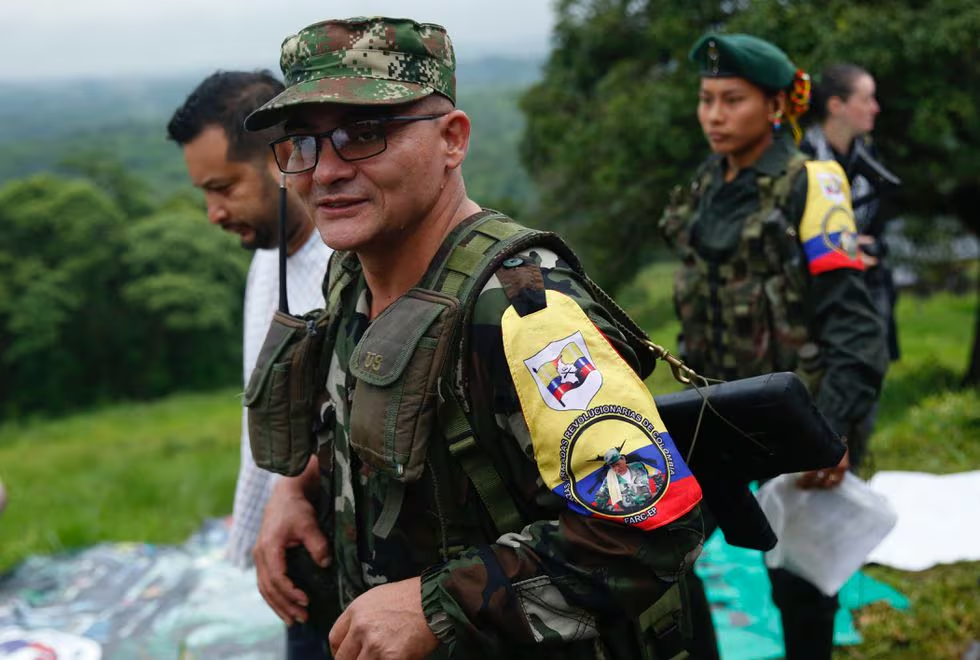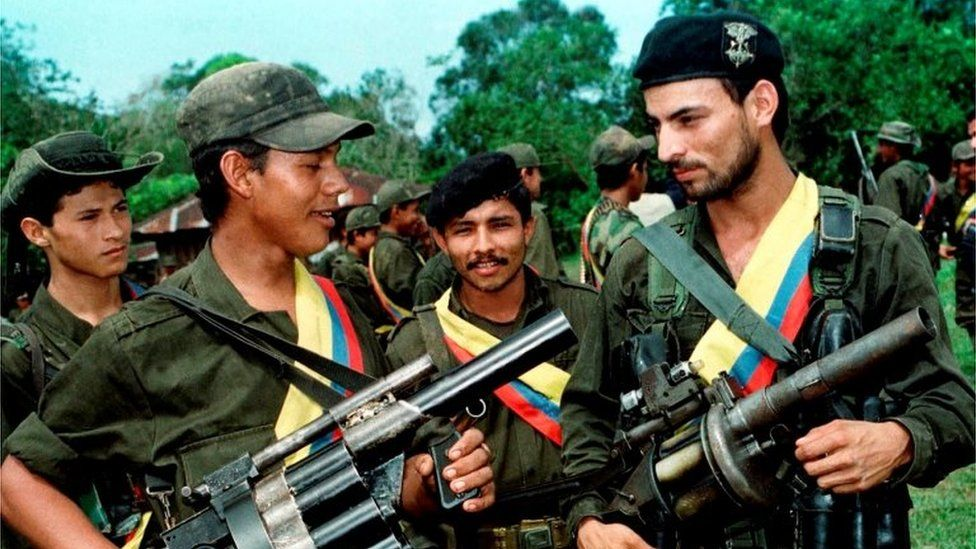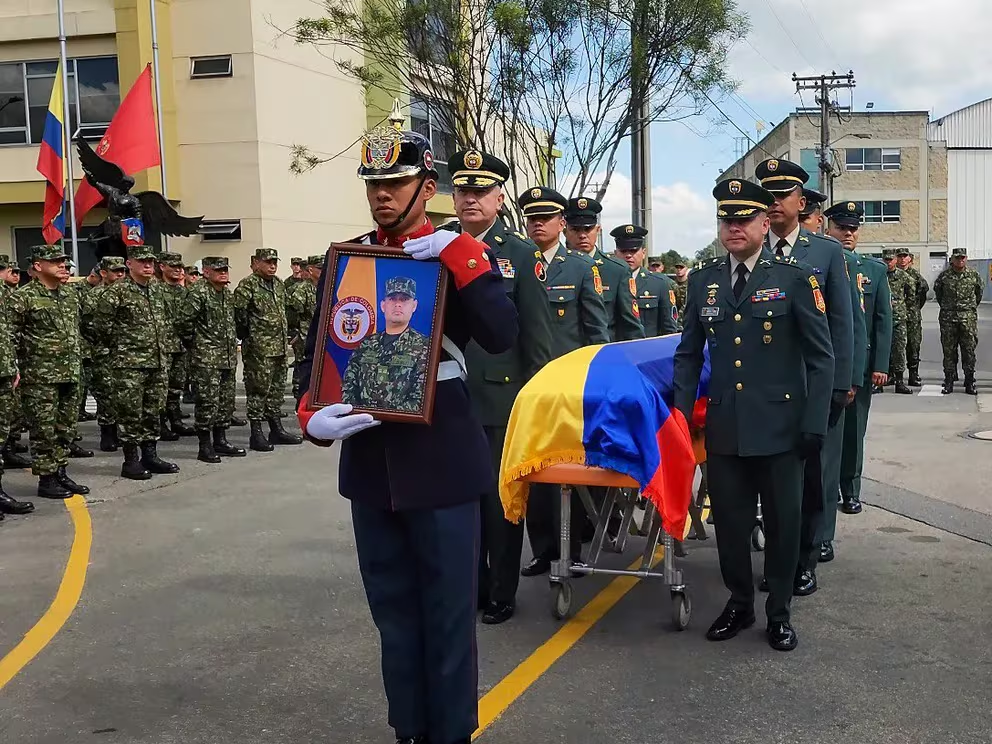Four Colombian soldiers were killed in action while undergoing an operation against a splinter group of the Revolutionary Armed Forces of Colombia, known as the Estado Mayor Central (FARC-EMC), on Friday.
The Battle:
Colombian authorities arrived in Argelia, a small town in Colombia’s south-western Cauca Department, a region known for the FARC’s large presence, in order to seek out any members of the FARC following the dissolution of the ceasefire between the government and the armed group in March.
After capturing eight members of the Carlos Patino front of the FARC-EMC, authorities were awaiting extraction with the captured FARC members. However, the extraction was delayed due to bad weather, which allowed an estimated 200 members of the FARC to converge on the 78 soldiers, beginning the firefight that would take the lives of four servicemen.

Authorities were outnumbered and attacked from all sides, resulting in the deaths of three soldiers and the wounding of another, who later passed away from his wounds. In an effort to survive, the commanding officer of those attacked ordered soldiers to hide the bodies of those killed in order to preserve their bodies for future extraction.
During the fighting, soldiers under fire contacted Semana in pleas following the lack of air support. Semana obtained an audio recording between a Colonel and an unnamed soldier during the fighting, wherein the soldier states the soldiers are surrounded. Excerpts from the recording can be read below:
Colonel: So, where can you defend yourself? That’s why I’m telling you to stick with Rodríguez or else throw yourself in the hole. Evasion and escape; throw yourself in the hole; throw yourself in the hole; evasion and escape.
Soldier: If I throw myself in the hole, they’ll kill me; they’ll kill me; they’ll kill me.
Colonel: Then, go towards Rodríguez, brother, go towards Rodríguez.
Soldier: It’s not possible, my colonel. It’s not possible, my colonel. Rodríguez is blocked; we’re all blocked from all sides.
Ultimately, these bodies would be discovered by the FARC, which allegedly “desecrated” the fallen soldiers, according to the Colombian Ministry of Defense. The Defense Ministry alleges that the leader of the FARC company, known by the alias “Dumar” or “Chito,” ordered the beheading of the killed soldiers, “which shows a serious violation of human rights and non-compliance with international humanitarian law.”
Durante los fuertes combates, el comandante de la maniobra en el terreno decide proteger la integridad de heridos, capturados y la vida de los soldados de la unidad militar. Por esta razón, los cuerpos de nuestros soldados caídos fueron ocultados para facilitar un repliegue… pic.twitter.com/LazO99GiCB
— Mindefensa (@mindefensa) May 6, 2024
While the military claims that the bodies were hidden for future extraction, the FARC stated on X that soldiers on the ground “abandoned” the bodies of their comrades before further stating that “they (the bodies) were not desecrated; they were guarded.”
The FARC further requested the Colombian Red Cross to mediate the return of the bodies of the fallen to Colombian authorities before addressing President Gustavo Petro, stating that “the war you propose to us shows its true face. The impact on civilians is your responsibility.”
Despite this request from the Red Cross, Caracol Radio revealed that the humanitarian organization did not play a role in the recovery of the bodies.
Two more soldiers remain wounded; however, the Colombian military has stated that they are both in stable condition and their injuries are not severe.
Those killed include Jairo Urrego David, Jorge David Fuentes, Javier Sosa Ballesteros, and Camilo Andrés Molina.
Due to the bad weather, it took the authorities two days to recover the bodies of the fallen and return them to their families for a proper burial.
This wouldn’t be the only attack against Colombian authorities in Cauca, as soldiers in Buena Vista were attacked by members of the FARC, who ambushed the group with firearms and an improvised explosive device on Monday. Two soldiers were declared dead after the attack, while two others were wounded.
“The Arpon 3 platoon in searches on the Buena Vista sidewalk sector enters into combat with the Dagoberto Damos structure; at the moment, the situation develops. They surprised them with gunfire, leaving two wounded and two professional soldiers dead,” the Army stated in a report.
Analysis:
The deaths of uniformed Colombian authorities are sure to have a significant effect on morale across the Colombian military. The attack also showcases the FARC’s military prowess and organizational skills, as the armed group managed to muster 200 fighters to take on military forces.
This attack has further harmed relations between the FARC-EMC and the Colombian government, preventing any thought of a ceasefire from entering the minds of Colombians across the country. While the government has previously stated they would not reenter peace talks with the FARC-EMC due to their actions which brought an end to the previous agreed upon ceasefire, some believed talks would reengage due to the long history of the FARC or Colombian government breaking ceasefires before eventually returning to negotiations.
However, this harming of relations does not mean that the government will not pursue the reopening of peace talks with the FARC. It remains possible that Colombian authorities will use the suspension of the ceasefire to weaken the FARC-EMC further, allowing the government to both have an upper hand if negotiations are resumed while also curbing the FARC-EMC’s growth that was seen under the previous ceasefires with the government.
This refusal to reenter peace talks with the FARC-EMC can also be seen as a departure from President Gustavo Petro’s controversial plan to bring “total peace” to Colombia, ending the 60-year-long civil struggle that has led to the deaths of 450,000 people, while more remain missing. This plan is characterized by the president’s attempts to make peace with the various armed groups active in Colombia as opposed to military action in an effort to wipe them out.
This policy has achieved mixed results; while ceasefires with the FARC-EMC have been negotiated, talks have previously stalled with the National Liberation Army (ELN), a similar communist guerilla group.
FARC:
The FARC, otherwise known as the Revolutionary Armed Forces of Colombia, were originally leftist guerillas dedicated to bringing class revolution to Colombia during a period in the nation’s history known as “La Violencia,” otherwise known as the Violence. This period followed the assassination of the Liberal Party’s leader and presidential frontrunner, Jorge Eliecer Gaitan, in 1948, an assassination that would throw Colombia into chaos.
After his death, leftists in Bogota began what is known as the Bogotazo, a massive riot that quickly expanded across Colombia, leading to La Violencia. A number of right-wing paramilitary organizations and leftist guerilla groups would be formed during this period of Colombian history.
One of the most well-known was the Revolutionary Armed Forces of Colombia, or FARC. The group would find its formation after a failed attack in 1964 by the Colombian military on what was known as a self-defense community, one of a number of communist-held areas in rural Colombia. Despite the communists only having 48 active fighters opposed to the 16,000 Colombian soldiers, the group would survive the attack and escape to the nearby mountains where the FARC would be formed.

Since then, the FARC has operated as rebels, launching guerilla attacks on military convoys and strategic targets. Despite originally being made up of only 48 fighters, the group’s ranks would swell to the hundreds in later years. For much of its early history, the FARC would be limited to small-scale guerrilla encounters with government forces, but after what has been coined the “Coca Boom,” a period in which the production of cocaine skyrocketed, the group found itself with more funds to allocate to their operations.
The FARC would expand their operations into urban Colombia following the Seventh Guerilla Conference in 1982, largely due to their increase in funds. The group would also begin to send promising troops to the USSR and Vietnam for advanced training.
The FARC would eventually agree to a momentous ceasefire with the government in 2016, which would see the bulk of the FARC disarmed and disbanded. Despite the ceasefire, however, a number of members of the FARC continued their operations against the government and the people of Colombia. These groups would label themselves as “fronts,” a leftover from the group’s original structure, with two factions emerging.

The first, the FARC-EMC, would be founded by Gentil Duarte, who was sent back to Colombia amid the peace conference in Cuba due to Ivan Mordisco separating himself and his soldiers from the peace process. The two would send out messengers to a number of commanders of the FARC’s other fronts, seeking to unite them into one body and continue the organization’s armed struggle against the government. This would succeed, and in 2017, Duarte and Mordisco would announce the birth of the FARC-EMC.
Their main rival would prove to be the Second Marquetalia, which was formed by a number of former FARC commanders, many of whom previously accepted the ceasefire but would rearm in 2019. The group’s main territory encompasses the Venezuelan-Colombian border, where the FARC has historically enjoyed a great deal of protection from authorities in Venezuela. The Second Marquetalia would even come into conflict with another dissident faction of the FARC. This faction, known as the 10th Front, had refused to support the leaders of the Second Marquetalia, who had attempted to pull rank on the dissidents in Venezuela following their rearmament. Following the refusal, the 10th Front would face direct action by Venezuela’s military, in what Insight Crime reports was an attempt to grant further power to the Second Marquetalia.

